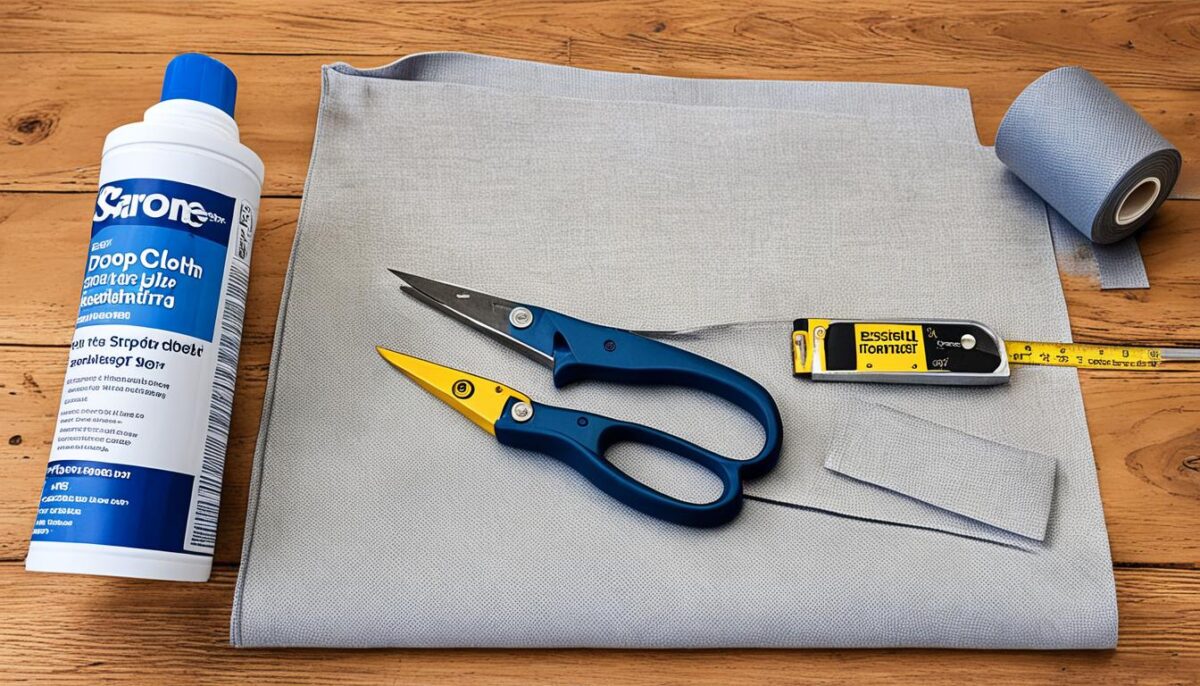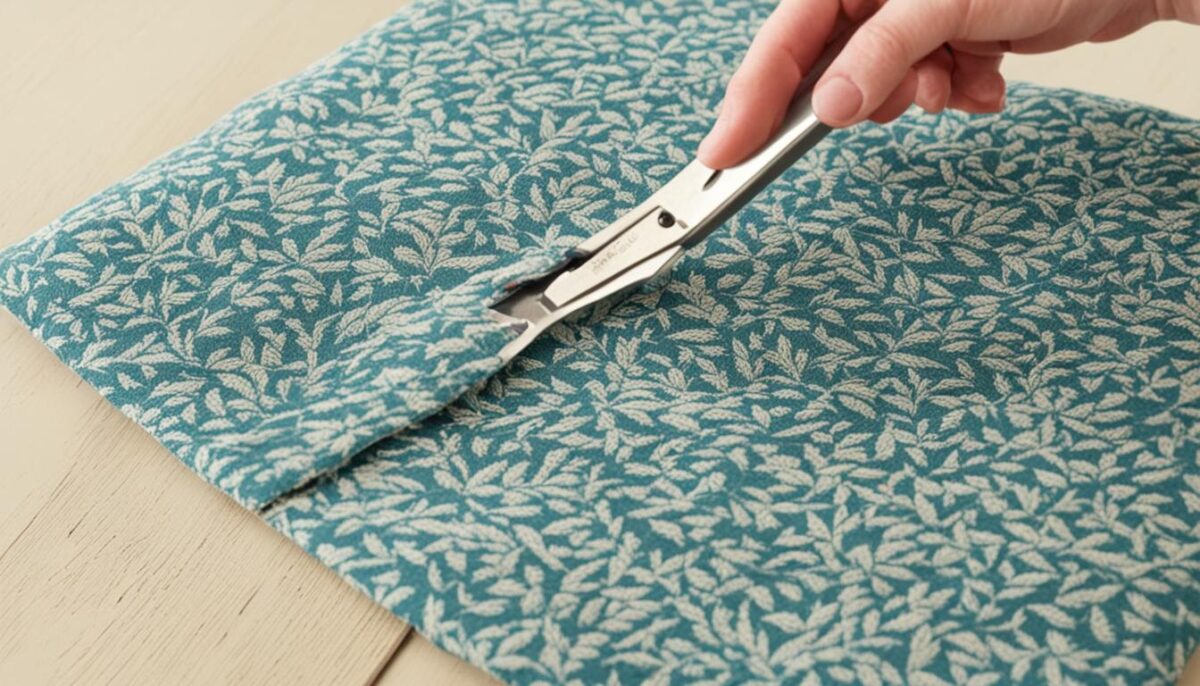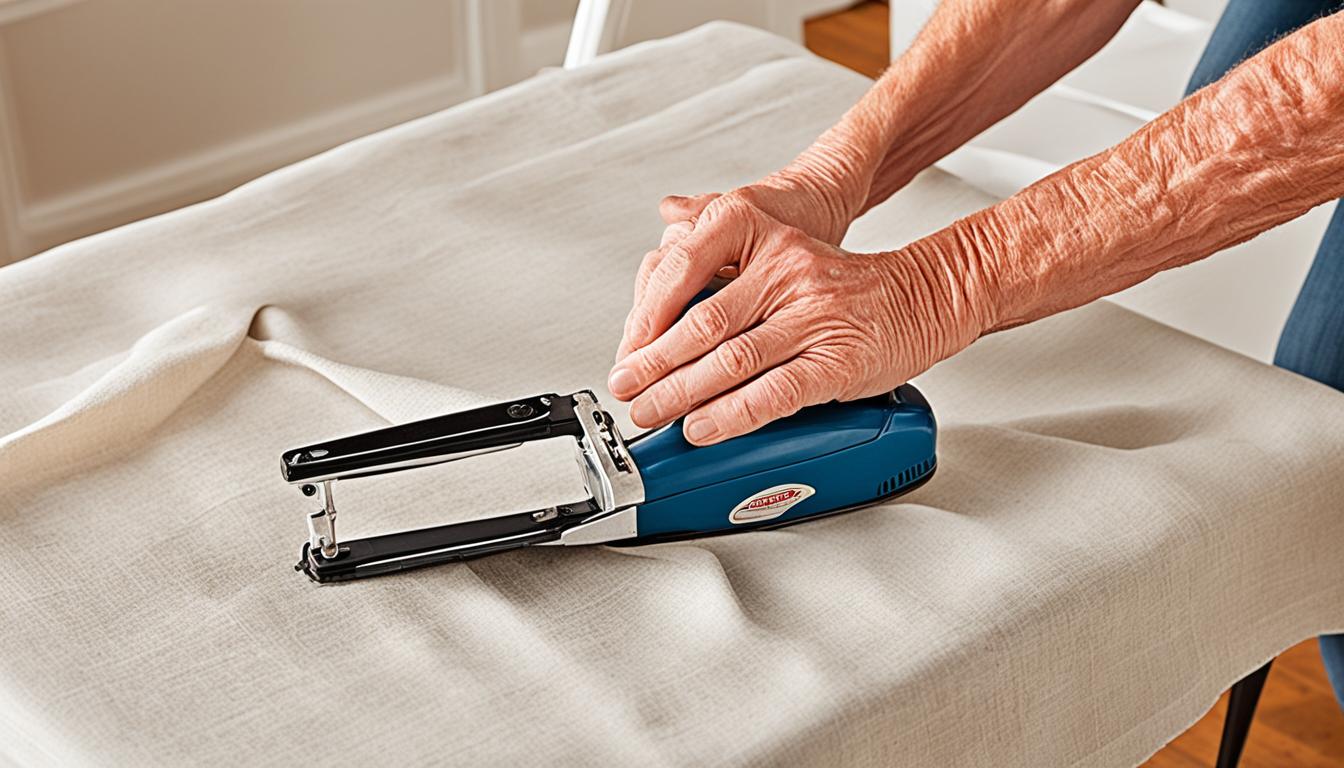Are you tired of your old furniture but don’t want to invest in new pieces? Reupholstering is a cost-effective way to give your furniture a fresh look, and using drop cloth as your fabric of choice can bring a stylish touch to any room. Discover how this simple technique can transform your worn-out pieces into stunning, long-lasting treasures.
When it comes to reupholstering, choosing the right fabric is essential. Drop cloth, typically used for purposes like painting and construction, is a fantastic option for furniture due to its durability and versatility. Its sturdy and tightly-woven nature ensures a long-lasting finish that can withstand daily use.
Transforming your furniture with drop cloth is not only practical but also an eco-friendly choice. By repurposing your existing pieces, you contribute to reducing waste and minimizing your environmental impact.
Whether you have a worn-out armchair or a faded ottoman, reupholstering with drop cloth can breathe new life into your furniture. Say goodbye to shabby upholstery and hello to a fresh and revitalized aesthetic that fits your style and preferences.
In the upcoming sections, we’ll guide you through the process of reupholstering with drop cloth. We’ll explain the materials you’ll need, provide a step-by-step guide, and share tips for achieving a professional-looking finish. Get ready to unleash your creativity and transform your furniture into stunning focal points in your home.
Materials Needed for Drop Cloth Reupholstering
Before you can begin reupholstering with drop cloth, it’s important to gather all the necessary materials. Having everything on hand will help ensure a smooth and efficient process. Here’s a list of the tools and supplies you’ll need:
- Drop cloth fabric – Choose a durable and heavyweight drop cloth fabric for a long-lasting finish.
- Scissors – You’ll need a pair of sharp scissors for cutting the fabric.
- Staple gun – A staple gun is essential for attaching the fabric securely.
- Staples – Make sure you have a sufficient supply of staples for the staple gun.
- Webbing or new foam – Depending on the condition of your furniture, you may need to replace the webbing or foam for additional support and comfort.
- Screwdriver – Some furniture pieces may require removing screws, so keep a screwdriver handy.
- Needle and thread – For any small repairs or stitching.
- Measuring tape – A measuring tape will help ensure accurate fabric cutting.
- Drop cloth – You’ll need an additional drop cloth to protect your work area.
Having these materials at your disposal will make the drop cloth reupholstering process more convenient and efficient.
| Materials Needed for Drop Cloth Reupholstering |
|---|
| Drop cloth fabric |
| Scissors |
| Staple gun |
| Staples |
| Webbing or new foam |
| Screwdriver |
| Needle and thread |
| Measuring tape |
| Drop cloth |
Now that you’re equipped with the necessary materials, you’re ready to dive into the exciting process of reupholstering your furniture using drop cloth. In the next section, we’ll provide a step-by-step guide to help you achieve stunning results.

Step-by-Step Guide for Reupholstering With Drop Cloth
Ready to give your furniture a fresh new look? Follow our simple step-by-step guide to reupholstering using drop cloth fabric. We’ll walk you through each stage of the process, providing helpful tips along the way, so you can transform your worn-out pieces into stylish and durable treasures.
Step 1: Prepping Your Piece
Start by removing any existing fabric or upholstery from your furniture. Inspect the frame for any loose or damaged parts and make any necessary repairs. Give the piece a thorough cleaning to ensure a clean surface for the drop cloth fabric.
Step 2: Measuring and Cutting
Measure the dimensions of each section of your furniture that you’ll be covering with drop cloth fabric. Add a few extra inches to allow for tucking and fitting the fabric snugly. Carefully cut the fabric, ensuring straight lines and smooth edges.
Step 3: Attaching the Fabric
Starting with the largest sections, begin attaching the drop cloth fabric to your furniture. Use a staple gun to secure the fabric in place, starting from the center and working your way outwards. Pull the fabric taut as you staple, ensuring a smooth and wrinkle-free finish.
Step 4: Dealing with Corners and Curves
When you come across corners, curves, or other challenging areas, take your time to create neat and professional-looking folds. Use scissors to trim any excess fabric if needed. Secure the folds with staples, ensuring a clean and polished appearance.
Step 5: Finishing Touches
Once all the fabric is attached, trim any excess material and fold it neatly under the furniture for a clean finish. Secure the loose ends with staples or fabric glue. Give your piece a final inspection, making sure everything is secure and free from wrinkles.

Now that you’ve completed the step-by-step guide, you’re well on your way to achieving a beautifully reupholstered piece using drop cloth fabric. Stay tuned for Section 4, where we’ll share additional tips for achieving a professional-looking finish and adding extra details to take your project to the next level.
Tips for a Professional-Looking Finish
When it comes to reupholstering your furniture with drop cloth, achieving a professional-looking finish is key. Follow these helpful tips to ensure your project turns out beautifully:
1. Careful Cutting: Take your time when cutting the drop cloth fabric to ensure clean and precise edges. Measure twice and use sharp scissors to achieve a professional look.
2. Neat Corners and Curves: Handling corners and curves can be tricky, but with a little patience and practice, you can master it. Secure the fabric tightly around corners, folding and tucking it neatly for a polished appearance.
3. Extra Details: Consider adding extra details to elevate the overall look of your reupholstered piece. This could include adding decorative upholstery nails or piping along the edges for a sophisticated touch.
4. Finishing Touches: Once your furniture is reupholstered, take the time to inspect and make any necessary adjustments. Smooth out any wrinkles or creases, ensuring a professional-looking finish throughout.
By following these reupholstering tips, you can achieve a professional-looking finish that will impress everyone who sees your transformed furniture. With a little patience and attention to detail, your drop cloth reupholstery project will have a durable finish and breathe new life into your beloved pieces.



